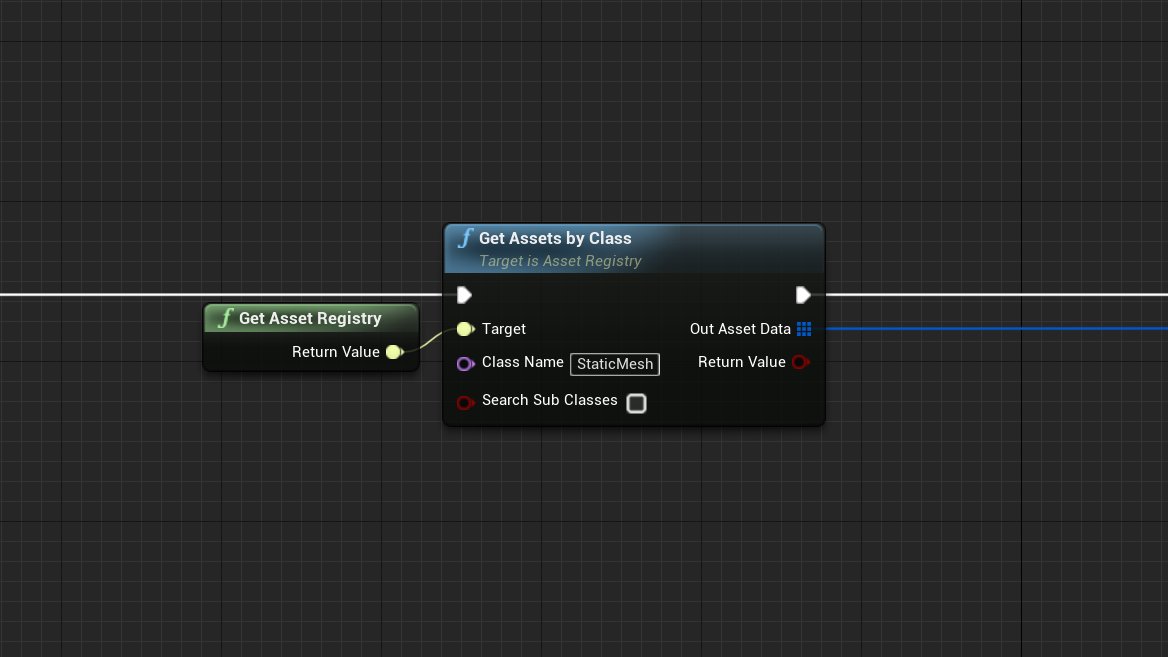Don't know what #UE4's Asset Registry is? Wondering how to query asset data _without_ the cost of loading that asset?! Well, look no further, time for a #UETips tweetorial!
The Asset Registry caches metadata about assets under the hood of UE, and can be used to query this metadata without loading assets.
The editor uses it for gathering references, data validation, the content browser's advanced search syntax (linked), etc.
docs.unrealengine.com/en-US/Engine/C…
The editor uses it for gathering references, data validation, the content browser's advanced search syntax (linked), etc.
docs.unrealengine.com/en-US/Engine/C…
However, the Asset Registry can be used at runtime! When your game is cooked, asset registry data is serialised with your packages; when a package is mounted, the asset registry will load that data.
In fact, Robo Recall uses the asset registry to query packaged mods!
In fact, Robo Recall uses the asset registry to query packaged mods!

"Sure Alex, but how is this useful?"
I'm glad you asked!
Well, remember when I mentioned that the registry stores metadata? You can generally see this when you hover over an asset in the content browser. For example, a Static Mesh:
I'm glad you asked!
Well, remember when I mentioned that the registry stores metadata? You can generally see this when you hover over an asset in the content browser. For example, a Static Mesh:

We could then query that metadata using the asset registry, get the tag value (i.e. Triangles), and then filter based on that condition. If this asset satisfies a condition, we could then asynchronously load it! 

The same API is used in C++, but we can also do a batch async load using the asset manager.
(The C++ API can also filter assets by tags, and optionally, their exact values. Check out FARFilter::TagsAndValues)
(The C++ API can also filter assets by tags, and optionally, their exact values. Check out FARFilter::TagsAndValues)

For programmers, IAssetRegistry also contains a number of events that are useful, like OnPathAdded/Removed, OnAssetAdded/Removed/Updated/Renamed, etc.
Additionally, programmers can define their own tags for their assets by adding the AssetRegistrySearchable property specifier, or by overriding UObject::GetAssetRegistryTags 





Using the asset registry can greatly speed up the querying of assets (instead of loading them), for both the editor and your game!
If you want more information, definitely check out the docs:
- Blueprint:
docs.unrealengine.com/en-US/Blueprin…
- C++:
docs.unrealengine.com/en-US/Programm…
- Python:
docs.unrealengine.com/en-US/PythonAP…
- Blueprint:
docs.unrealengine.com/en-US/Blueprin…
- C++:
docs.unrealengine.com/en-US/Programm…
- Python:
docs.unrealengine.com/en-US/PythonAP…
Also, if you haven't checked it out yet, definitely take a look at
@Serellan's Soft Object Refs tutorial (I used them in the async load above). Blueprints will load every hard referenced dependency and Soft Object Refs fix this!
@Serellan's Soft Object Refs tutorial (I used them in the async load above). Blueprints will load every hard referenced dependency and Soft Object Refs fix this!
https://twitter.com/Serellan/status/1250895354830053376
• • •
Missing some Tweet in this thread? You can try to
force a refresh
















